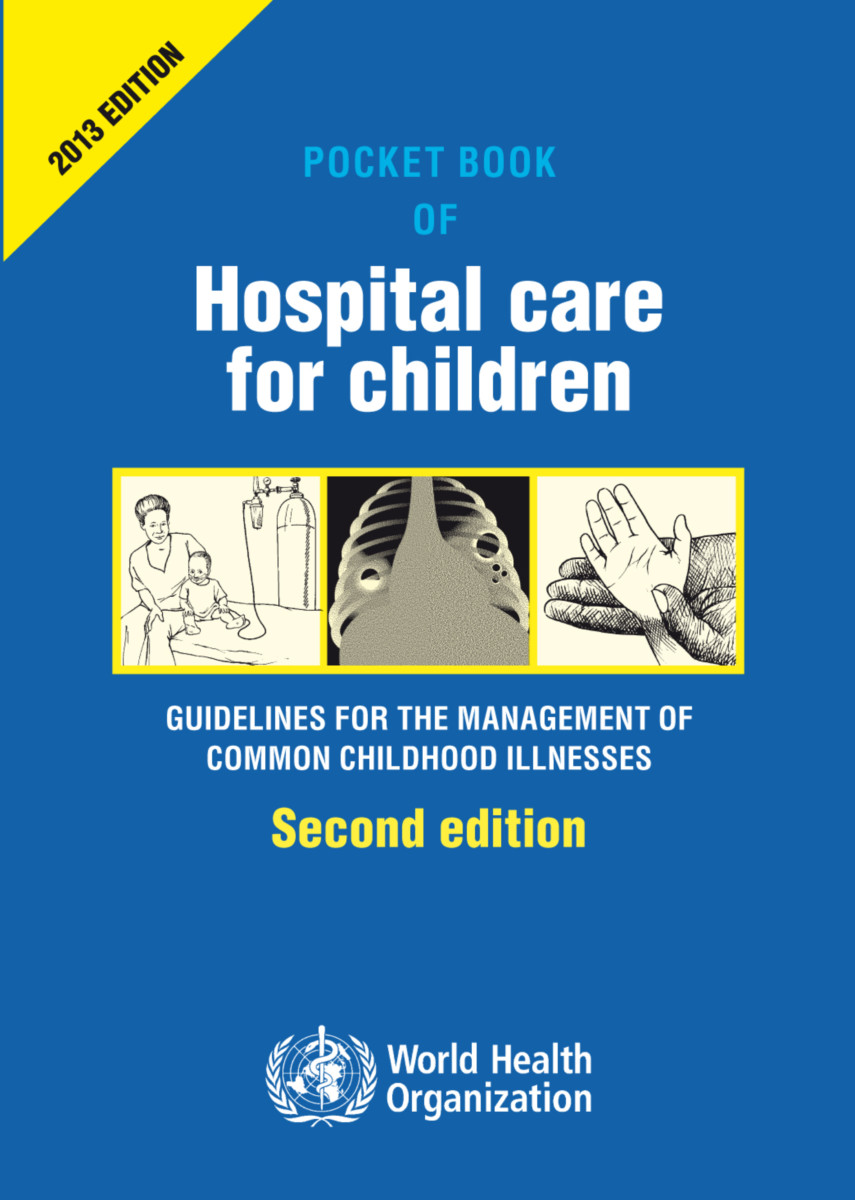Pocket Book of Hospital Care for Children Edition 2
Guidelines for the Management of Common Illnesses with Limited Resources
- Publisher
World Health Organization - Published
16th September 2013 - ISBN 9789241548373
- Language English
- Pages 426 pp.
- Size 4" x 5.75"
- Images tables & line drawings
The second edition of this pocket book is for use by doctors, senior nurses and other senior health workers who are responsible for the care of young children at the first referral level in developing countries. It presents up-to-date clinical guidelines which are based on a review of the available published evidence by subject experts, for both inpatient and outpatient care in small hospitals where basic laboratory facilities and essential drugs and inexpensive medicines are available. In some settings, these guidelines can be used in the larger health centers where a small number of sick children can be admitted for inpatient care.
The guidelines are for use in both inpatient and outpatient care in hospitals with basic laboratory facilities and essential medicines. These guidelines focus on the management of the major causes of childhood mortality in most developing countries, such as newborn problems, pneumonia, diarrhoea, malaria, meningitis, septicaemia, measles and related conditions, severe acute malnutrition and paediatric HIV/AIDS. It also covers common procedures, patient monitoring and supportive care on the wards and some common surgical conditions that can be managed in small hospitals.
"Pocket Book of Hospital Care for Children: Guidelines for the Management of Common Illnesses with Limited Resources provides a second edition of a classic covering common illnesses, packages it in a pocket-sized tote for easy take-along consultation, and provides the latest clinical guidelines based on a review of evidence for both inpatient and outpatient care. Guidelines for hospitals with basic labs and medicines focus on managing major causes of child mortality in most developing countries, covering common procedures, diagnosis, patient monitoring, and common surgeries. Anyone working with children in a hospital setting needs this updated reference!"
James A. Cox, Editor-in-Dhief - , California Bookwatch: December 2013, Midwest Book Review
"... Wow! If only this book had been around when we were overseas in Namibia and India respectively.... This book is an absolute must for anyone caring for children in areas of the world where resources are limited. If you are toying with the idea of doing a stint overseas (VSO/RCPCH fellowship, for example) this book will convince you to go. It speaks of an overwhelmingly 'real' medicine where children are properly sick, where your skills count, where you can change lives, and where the banding of your rota pales into insignificance....It comes highly recommended."
- Archives of Disease in Childhood (from the first edition)
World Health Organization
World Health Organization is a Specialized Agency of the United Nations, charged to act as the world's directing and coordinating authority on questions of human health. It is responsible for providing leadership on global health matters, shaping the health research agenda, setting norms and standards, articulating evidence-based policy options, providing technical support to countries, and monitoring and assessing health trends.


